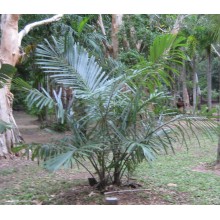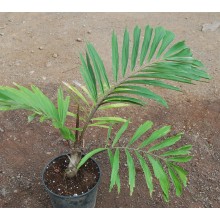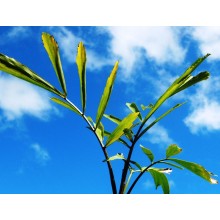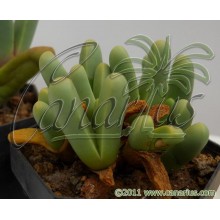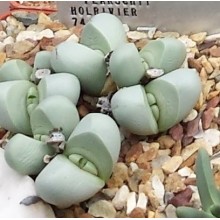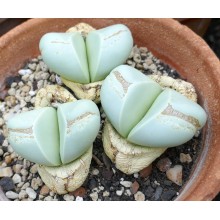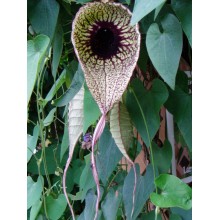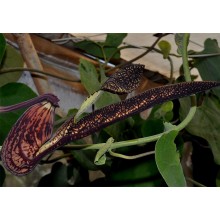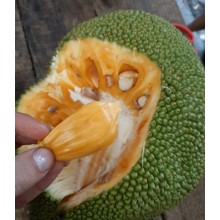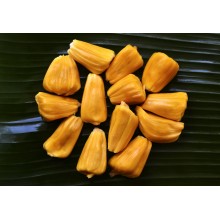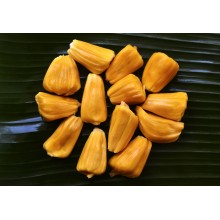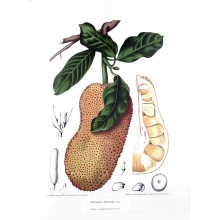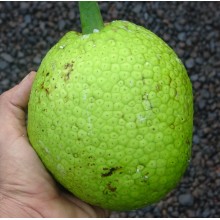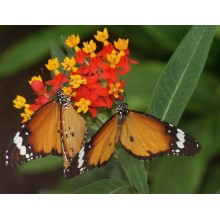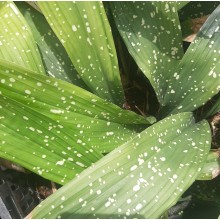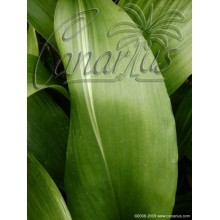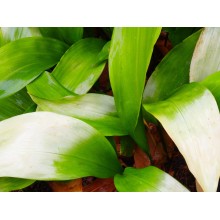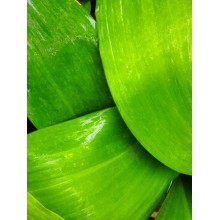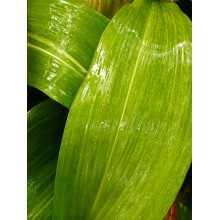General Plants There are 1881 products.

If you like exotic plants, you just came to the right place. Canarius offers the hard-to-find exotic plants which are seldom available in garden centres. Our shop has natural species as well as rare hybrids. We offer exotic plants from the Canary Islands.
Orders are sent to anywhere in Europe and also worldwide. Parcels will reach your home in a few days after shipping (but we also need some days for processing). Feel free to contact us if you have any questions.
Subcategories
-
Succulents
World deserts and dry areas are home to the most interesting plants. Canarius offers an increasing selection of succulent plants of maximum quality, because they are grown outdoors, under the full sun of the Canary Islands.
Succulents or "fat plants" are water-retaining species, adapted to dry conditions. They store succum (juice, water) in their leaves, stems or roots, and often show a stout and fleshy appearance.
-
Exotics
Exotic plants are species from other parts of the world, and they usually have ornamental qualities: a lush foliage, colorful flowers, unusual shapes... Here you can find a great variety of exotic plants: from Bromeliads and Heliconias, to pamls and houseplants.
Exotic plants do not have a particular use. Collectors buy this kind of plants for their rarity, for indoor or outdoor decoration, depending on their features.
-
Fruit, Herbs & Medicinals
Fruit, Herbs & Medicinal plants are focused on getting a better health. In this section, each type of plant produce healthy effects, both fruit trees (Feijoa, Pineapple, Fina de Jete...) and plants for health, such as Graviola, Aloe vera, Callisia fragrans...
In the normal metabolism of all living beings, the organism produces some substances from nutrients latent in the environment; some of these chemicals are part of the process in all (or almost) sort of species. Normally, the useful compounds are concentrated in some of its parts: leaves, seeds, flowers...
Find out your advisable plant and buy it online!
-
Special
On canarius.com we try to remove limits in the field of botany. On our online store we try to facilitate the purchase/sale of plants to anywhere in the world. That's why, we grow from the most common species to the most special plants, as we can see in this section.
-
Arenga australasica
Arenga australasica
Clumping feather palm from NE Australia, found mainly in coastal areas. Despite its tropical origin, it grows in colder climates.
72,00 € -
Arenga engleri
Arenga engleri
Clumping frost-hardy palm with attractive pinnate leaves that are dark green above, and silver below. This tropical-looking palm is native to the open forests of Taiwan and the Ryukyu Islands.
51,00 € -
Arenga pinnata
Arenga pinnata
Arenga pinnata is an economically significant feather palm native to tropical Asia, ranging from eastern India to Malaysia, Indonesia, and the Philippines in the east.
48,30 € -
Arenga ryukyuensis
Arenga ryukyuensis
This new palm was described in from southern Ryukyu Islands of Japan. It is similar to the beautiful Arenga engleri from Taiwan but it is probably more cold-tolerant. It is also smaller, with shorter and thicker stems, to 2m and 20cm diameter, and leaves to just 2m long. Slow, but frost-resistant, to about -7 C!
36,60 € -
Argyroderma fissum
Argyroderma fissum
Branched plant. Cont.= 8,5 cm. Pink flowered, clumping dwarf from the Knersvlakte desert in So.Africa. Leaves are blueish and finger-like. Rests in summer.
10,80 € -
Argyroderma testiculare
Argyroderma testiculare
Sphaeroid mesemb endemic to the quartz gravel of the Knersvlakte region, with jade-grey leaves. Location of this collection: Flaminkvlakte, population with 6 layered silky purple flowers
18,20 € -
Aristolochia grandiflora-large
Aristolochia grandiflora-large
Interesting deciduous vine from Central and South America
48,80 € -
Aristolochia ringens - Pelican beak
Aristolochia ringens - Pelican beak
Unusual flowering vine from from Central and South America.
47,20 € -
Artocarpus heterophyllus 'Amber' - Jackfruit
Artocarpus heterophyllus 'Amber' - Jackfruit
Seedling-The Jackfruit is the largest of all fruits after the pumpkins. It is a sweet and tasty relative of the Breadfruit, an everloved fruit widespread in SE Asie. It is tolerant of light frosts and can be tried outdoors in the warmer Mediterranean with some protection.Ambers have little latex and fruit quickly when planted from seed.The flesh colour is...
149,60 € -
Artocarpus heterophyllus 'Black Gold' - Jaca, Jackfruit
Artocarpus heterophyllus 'Black Gold' - Jaca, Jackfruit
Grafted! - The Jackfruit is the largest of all fruits after the pumpkins. It is a sweet and tasty relative of the Breadfruit, an everloved fruit widespread in SE Asie. It is tolerant of light frosts and can be tried outdoors in the warmer Mediterranean with some protection. Grafted plants can also fruit in large pots as they can be kept small.
138,20 € -
Artocarpus heterophyllus 'Black Gold' - Jackfruit (Air layering)
Artocarpus heterophyllus 'Black Gold' - Jackfruit (Air layering)
Grafted! - The Jackfruit is the largest of all fruits after the pumpkins. It is a sweet and tasty relative of the Breadfruit, an everloved fruit widespread in SE Asie. It is tolerant of light frosts and can be tried outdoors in the warmer Mediterranean with some protection. Air layering is the way to make it bear fruit faster... even after a year.
124,20 € -
Artocarpus integer - Chempedak
Artocarpus integer - Chempedak
Artocarpus integer, commonly known as chempedak or cempedak, is a species of tree in the family Moraceae in the same genus as breadfruit and jackfruit.
198,00 € -
Artocarpus x Altilis 'Ma' Afala' - Breadfruit
Artocarpus x Altilis 'Ma' Afala' - Breadfruit
This is the true breadfruit from the Pacific Islands. This is the true breadfruit. Ma'afala, or simply Maafala is the best cultivar for familiar use. It is dwarf and bears small fruits, of very good quality. Lots of fruits! It starts bearing at just 3 m in height and stays rather small for its whole life. Fruits have few or no seeds inside.
290,00 € -
Asclepias curassavica
Asclepias curassavica
Butterfly Milkweed is grown as an ornamental plant. It lasts several years as a perennial if kept above 5C. The leaves are the favourite food of Danaus butterflies. If Danaus are in your region, plant a few and they will come !
11,70 € -
Aspidistra daibuensis 'Totally Dotty'
Aspidistra daibuensis 'Totally Dotty'
This is one of the most beautiful aspidistras we grow. Leaves have a beautiful texture, with tiny elegant ribs, and a lot of well defined spots... sorry "Dots"... these are bright white but their outer edge is yellow and then dark green, so they stand out a lot.
28,30 € -
Aspidistra elatior 'Variegata'
Aspidistra elatior 'Variegata'
Wide exotic striped leaves rise from rhizomes. Aspidistra is a perfect indoor plant and a does well outdoors in the tropical-looking garden.
11,30 € -
Aspidistra elatior 'Asa Ahi'
Aspidistra elatior 'Asa Ahi'
Hard-to-find Japanese selection of "variegated" Aspidistra. It is not striped: each leaf develops a cream white "shade" in the upper part of the blade. Aspidistras make excellent pot plants for shade. They can live indoors or outdoors as they can take real frost.
17,44 € 21,80 €Reduced price! -
Aspidistra elatior 'Bubba'
Aspidistra elatior 'Bubba'
This selection of Aspidistra elatior from Florida is a particularly nice, wide-leaf, solid dark green selection. It grows to at least 1 m tall with broad foliage that may exceed 15 cm in width. A bold garden specimen.
19,40 € -
Aspidistra elatior 'Morning Frost'
Aspidistra elatior 'Morning Frost'
NEW! Variegated aspidistra with "frosted" mottled leaves and occasional stripes.
19,40 €
At the moment there are few products in this category General Plants




















